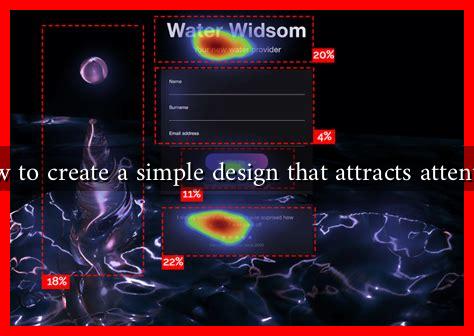-
Table of Contents
How to Create a Simple Design That Attracts Attention
In a world saturated with information and visual stimuli, creating a simple design that captures attention is more crucial than ever. Whether you are designing a website, a marketing campaign, or a product, simplicity can be your greatest ally. This article will explore effective strategies for creating designs that not only attract attention but also communicate your message clearly and effectively.
The Power of Simplicity
Simple designs are often the most effective. According to a study by the Nielsen Norman Group, users prefer designs that are straightforward and easy to navigate. A cluttered design can overwhelm users, leading to confusion and disengagement. Here are some reasons why simplicity works:
- Clarity: Simple designs convey messages more clearly, allowing users to understand the content quickly.
- Focus: A minimalist approach helps direct attention to the most important elements of your design.
- Memorability: Simple designs are easier to remember, making them more effective for branding.
Key Elements of Attention-Grabbing Design
To create a simple yet effective design, consider the following key elements:
1. Color Palette
Colors evoke emotions and can significantly impact user behavior. A well-chosen color palette can enhance your design’s appeal. Here are some tips:
- Use a limited color palette (2-3 colors) to maintain simplicity.
- Choose colors that align with your brand identity and message.
- Utilize contrast to make important elements stand out.
2. Typography
Typography plays a crucial role in design. The right font can enhance readability and convey your brand’s personality. Consider the following:
- Select one or two fonts to keep the design cohesive.
- Ensure that the font size is legible across different devices.
- Use font weight and style to create a visual hierarchy.
3. White Space
White space, or negative space, is the area around design elements. It is essential for creating a clean and organized look. Here’s how to use white space effectively:
- Allow breathing room around text and images to enhance readability.
- Use white space to separate different sections of your design.
- Avoid overcrowding elements to maintain focus on key messages.
Case Studies: Successful Simple Designs
Several brands have successfully implemented simple designs that attract attention. Here are a few notable examples:
1. Apple
Apple is renowned for its minimalist design approach. Their product pages feature clean layouts, ample white space, and a limited color palette, allowing the products to take center stage. This simplicity not only enhances user experience but also reinforces their brand identity as a leader in innovation.
2. Airbnb
Airbnb’s website design is another excellent example. The use of large images, simple navigation, and clear calls to action makes it easy for users to find what they need. Their focus on user experience has contributed to their success in the competitive travel industry.
Statistics That Support Simple Design
Research supports the effectiveness of simple design. A study by Forbes found that 94% of first impressions are design-related, and 75% of users judge a company’s credibility based on its website design. These statistics highlight the importance of creating a design that is not only visually appealing but also simple and user-friendly.
Conclusion
Creating a simple design that attracts attention is an art that combines clarity, focus, and effective use of elements like color, typography, and white space. By prioritizing simplicity, you can enhance user experience, improve brand recognition, and ultimately drive engagement. Remember the examples of successful brands like Apple and Airbnb, and consider the statistics that underscore the importance of design in user perception. Embrace simplicity in your design process, and watch as your creations resonate with your audience.

